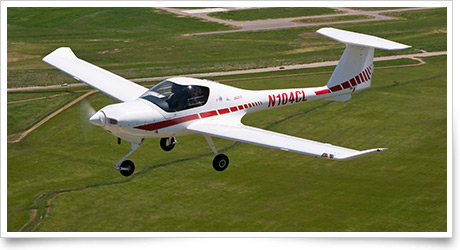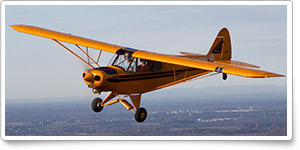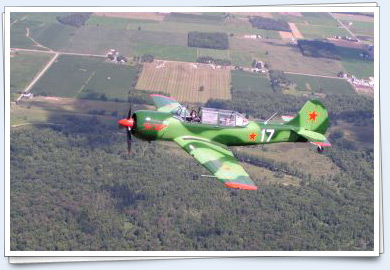| ||||||
| Multiple runways, multiple choices |
| |||||
Training TipsMultiple runways, multiple choices
The wind is brisk from the south, and you realize that the crosswind component would be greatly reduced if you could use Runway 18/36 for landing. Based on your preflight planning, it is neither closed nor restricted for use.
Contacting approach control, you are pleased to receive instructions to enter a left base leg for Runway 18, abbreviating your traffic pattern and providing a direct headwind on final approach. That, in turn, will lower your groundspeed at touchdown, letting you decelerate to taxi speed and exit the runway promptly, making airport operations more efficient. (Remember that as a student pilot making your arrival, the FAA says that you should not participate in any land-and-hold-short operations—LAHSO—that may be in progress.)
What would you have done if the controller had not offered Runway 18?
Traffic permitting, it may have been possible to request Runway 18 for landing and again for takeoff when departing for home. It won’t hurt your chances of getting the desired runway if you also notify ATC that you are a student pilot.
Numerous traffic-flow-management options give controllers flexibility to speed the flow and increase safety margins for pilots of aircraft large and small. For example, on a sufficiently long runway, taking off from an intersection may be offered by ATC or requested by pilots—especially to avoid extensive taxiing or overheating the aircraft’s engine on a hot day.
Faced with choices, you may have to decide quickly. As you hold short of the active runway for departure with a heavy aircraft on final approach, ATC may offer you an “immediate takeoff” designed to spare you a long wake turbulence hold that would be required after the heavy lands.
Don't rush your pretakeoff procedures. If any offered alternative to your departure plan makes you feel uncomfortable or pressured, decline. The final decision is yours.
Sometimes, terminal information broadcasts may note that an alternative runway, perhaps better aligned with the wind, is available. If it isn't stated, and using a different runway seems to be the safest option, by all means, go ahead and ask. Flight Training NewsTeacher plans bicoastal biofuel flightRhode Island private pilot and high school teacher Ross McCurdy hopes to make a lasting impression and further the cause of going green in general aviation in his upcoming coast-to-coast flight. McCurdy plans to complete the flight in an SMA SR305 aerodiesel-powered Cessna 182. Read more >> Flight school takes sim training to shopping centerA new flight school in Alabama is bringing training—the ground school and simulation portion of it—to a shopping center. Zulu Flight Training opened a storefront at the Eastern Shore Centre in Spanish Fort, Ala., where it conducts ground school and training in a variety of simulators, including an AATD FMX 1000 Redbird full-motion simulator. Flight training is conducted in a Cessna 172SP based at H.L. Sonny Callahan Airport in Fairhope. The school offers private and instrument training and currency and proficiency programs, with plans to include commercial pilot and CFI training in the future. Bring friends and family along in your trainingEven if you’re well into your flight training, chances are those closest to you probably don’t understand everything that’s involved with learning to fly. Or they may have a bit of apprehension about flying in “those small airplanes.” Ease their minds and put them in the co-pilot seat before you even take them flying with the Air Safety Institute’s Pinch Hitter online course. It’ll answer their questions and take the fear of the unknown out of the equation, and it could even provide the spark they need to begin their flight training! Santa Monica drops plan to pay schools to fly elsewhereThe Santa Monica, Calif., City Council has shelved a controversial plan to reduce noise at Santa Monica Municipal Airport by paying student pilots to train elsewhere. The council had proposed paying flight schools $150 each time student pilots and their flight instructors went to other airports to practice takeoffs, landings, and other maneuvers. According to the Los Angeles Times L.A. Now blog, the plan was scuttled because city council members said it would be difficult to objectively evaluate. It also drew objections from the neighboring airports that would presumably draw the additional training traffic. Nominate the best flight training school or CFIIn flight training, one size does not fit all. The market for flight training is small, and schools have to try and be all things to all students. As a result, some students fall through the cracks. The good news is that the guts of what makes a great school are consistent. AOPA launched the AOPA Flight Training Excellence Awards to honor those who exemplify what it means to be a great flight school or instructor. Nominate the school or instructor you believe embodies the best in flight training by Aug. 24. Read more >> Training ResourcesYour flight instructor has taught you to preflight your aircraft diligently. But, what exactly are you looking for when inspecting rivets, hinges, landing gear assembly, and so on? Whether you rent or own, the Air Safety Institute’s Aging Aircraft online course helps you pinpoint the important items to observe. An interactive airplane schematic includes views of the interior, exterior, and under the cowling. And pictures of cracks and corrosion examples help you get acquainted with the most common problem areas generally found in older aircraft.
Did you know that student pilots who join AOPA are three times more likely to complete their flight training? Membership includes unlimited access to aviation information by phone (800/USA-AOPA, weekdays from 8:30 a.m. to 6 p.m. Eastern time) or from Flight Training Online or AOPA Online. If you’re not already a member, join today and get the pilot’s edge. Login information is available online. American Flyers/Nova Southeastern University programAmerican Flyers, a chain of flight schools, is partnering with Nova Southeastern University in Fort Lauderdale, Fla., to offer a bachelor’s degree in human factors in aviation. Students can participate in person or online, so long as they conduct their training at any of American Flyers’ eight national locations. American Flyers CEO Don Harrington says the new program is an effort to meet the growing demand for airline pilots. Watch the interview on AOPA Live® >> Career PilotDelta pilot contract to slash hundreds of 50-seat regionalsA vote by Delta Air Lines pilots in July to accept a proposed contract, negotiated between airline management and the pilots’ union, will bring annual pay increases through 2015—but its scope clause will eliminate more than 5,000 seats of Delta Connection capacity, AIN Online reported July 2. The contract, which took effect July 1, could radically change the structure of the airline business in the United States. AIN said the contract requires Delta Connection carriers to remove some 50-seat regional jets from their fleets—218 of them. While the carriers can add some 70 two-class, 76-seat jets, Delta will add up to 88 Boeing 717s—most of them AirTran jets not desired by its new owner, Southwest Airlines. Teamsters seek to represent Allegiant Air pilotsThe Airline Division of the International Brotherhood of Teamsters announced July 2 that it has asked the National Mediation Board for a representation election to be held for the pilots of Allegiant Air. Allegiant Air, a subsidiary of Las Vegas-based Allegiant Travel Company, employs 363 pilots flying McDonnell Douglas MD-80 and Boeing 757 aircraft. “The overwhelmingly positive response we received in meetings and the outstanding response to the card drive is a testament to the dedication of the Allegiant Air pilots,” said Capt. David Bourne, director of the Airline Division. “We look forward to a favorable ruling on our application by the NMB and a vote being scheduled as soon as possible.” Plane SpotterSuper Cub: Specialized performer Training ProductsSporty’s VFR Communications appStill stumbling over your radio calls? The Sporty’s VFR Communications app for iPhone or iPad breaks the topic into eight subject areas and 23 individual video segments. The app features 3-D animations, in-flight video, and real-world communications scenarios. Air traffic control, emergency situations, and nontowered airports are covered. The app sells for $34.99.
Note: Products listed have not been evaluated by ePilot editors unless otherwise noted. AOPA assumes no responsibility for products or services listed or for claims or actions by manufacturers or vendors. Member BenefitsSeatbelts: Remember the rule of threeAs pilot in command of an aircraft, you have a lot of responsibility, especially when you become a private pilot and get to carry passengers. Not only must you make sure you are buckled, but the regulations require that you must also ensure that your passengers are buckled and briefed. Attorney Kathy Yodice explains how the “Rule of Three” can help you remember your obligations. Read more >> BlogsBalloons and ATCHow do balloon pilots coordinate their flights with air traffic control? Technical Editor Jill W. Tallman follows up on a question asked during the July Flight Training Facebook chat. Also in the Flight Training blog, Tallman discusses findings of a recent digital poll in which respondents divulged the number of flight instructors they had. A new approach to FIRCsJohn and Martha King of King Schools Inc. felt so strongly that the flight instructor refresher clinic needed overhauling that they created their own. The new FIRC emphasizes risk management and looks at nontraditional topics such as conducting a meaningful flight review. John King gives details in the Learning Curve blog. AOPA Career OpportunitiesEver dream of turning your passion for aviation into a career? We’re looking for an aviation technical generalist, Web graphic designer, and enewsletter and social media editor. To learn more about other AOPA career opportunities, visit AOPA Online. Community
AVIATION EVENTS & WEATHER
| ||||||||||||||||||||||||||||||||||||




 Arriving from the north at a bustling towered airport, you listen as the automatic terminal information service (ATIS) broadcast provides wind and weather information and informs you that
Arriving from the north at a bustling towered airport, you listen as the automatic terminal information service (ATIS) broadcast provides wind and weather information and informs you that 




